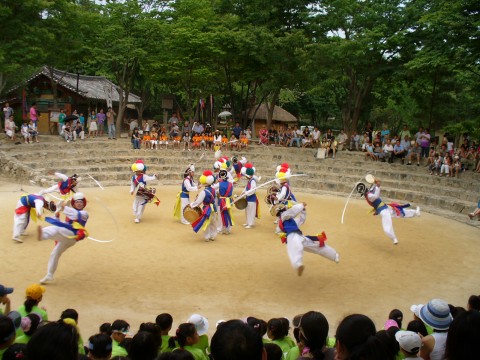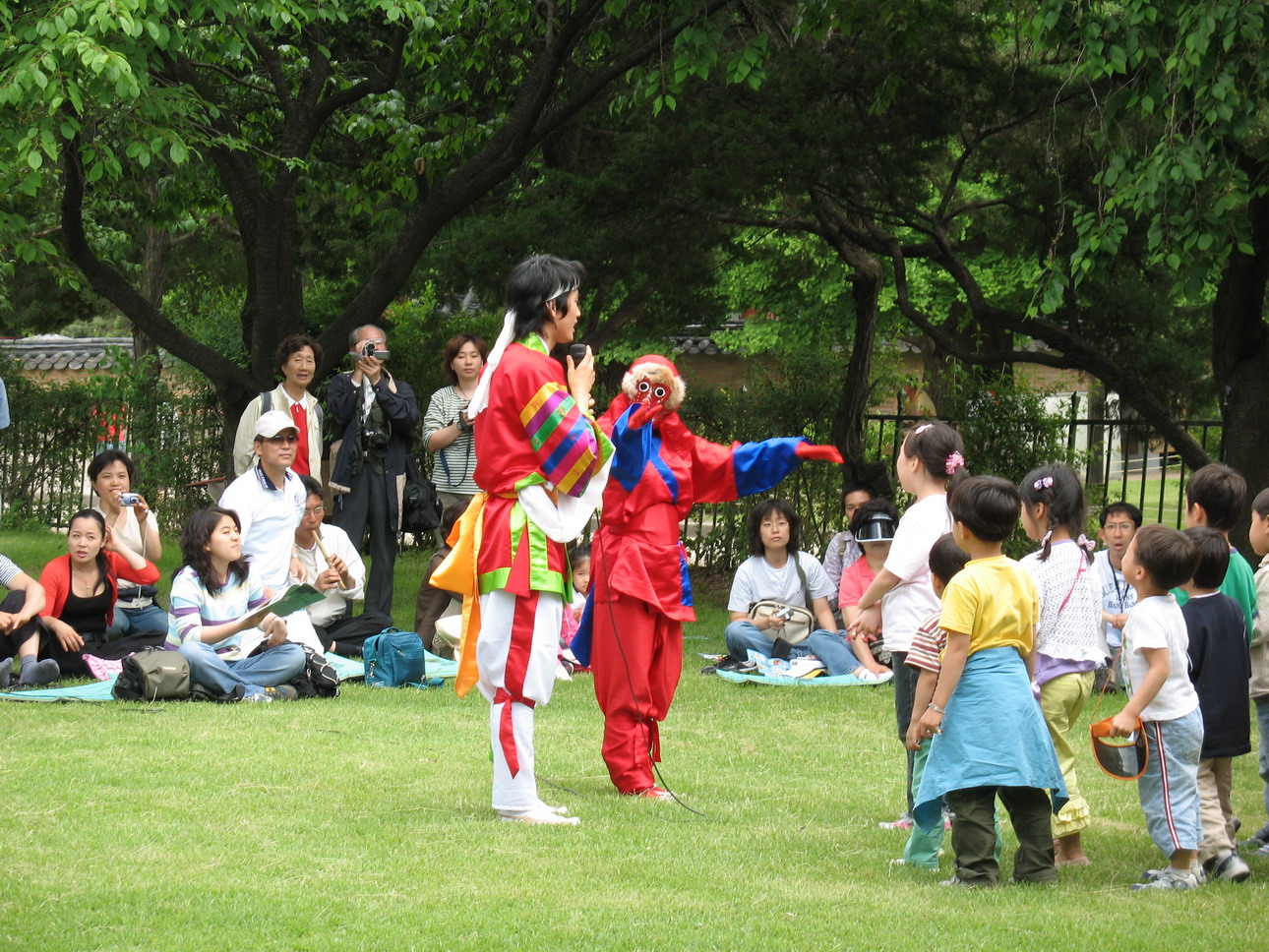History
Culture
Pottery
Traditional Music
Traditional Clothing
Traditional Houses
Traditional Dances
Traditional Painting
Food
Tourism
Merchandises
|
Traditional Dances
Korean dance is more than simply a form of entertainment It is an expression of a metaphysical philosophy Koreans have traditionally believed that the human body is a universe onto itself and that man's ideal existence lies in harmony with heaven and earth. |
The earliest evidence of Korean dance is found in historical records from China and Korea and as mentioned above, in the murals found in Muryongsh'ong the Tomb of the Dancers dating back to Koguryo. Among the extant written records is the Akhak Kwoebim (Canon of Musical Science), a comprehensive study of Korean music and dance compiled during the reign of Joseon King Songjong (r. 1469-1494). This record provides explicit descriptions of dances, costumes props procedures and instruments and has helped modern artists recreate many traditional dances. |
In the Goryeo era(918-1392), dances were performed at major national events such as the 'Yeondeunghoe' (national Buddhist event) and 'Palgwanhoe' (praying to god for the well being of the nation). In the early/mid Joseon era (1392-1910) court dances saw development, while in the later Joseon years it was folk dances that took the focus. Court dances developed with the installation of royal culture, and were danced at national banquets and celebrations as well as for foreign dignitaries. |
Most court dances are in praise of the solemnity and importance of the royal family, and are characterized by the beautiful costumes and strong artistic blend. 'Geommu', 'hakmu' and 'cheoyongmu' are the main court dances. |
On the other hand folk dance developed along with increase in commerce and industry. It expressed the lives and emotions of the common people and often criticized society at the time. 'Talchum', 'musokchum', 'kkokdugaksi nori', 'taepyeongmu', 'hannyangmu', and 'salpurichum' are some of the most well known folk dances. |
Of these, the 'talchum' mask dances and 'sandaenori' mask dances were especially known to be critical of the wrongdoings carried out by aristocrats and monks. Dances such as the 'jangguchum and 'buchaechum' fan dance, which are thought to be traditional dances, are relatively new inventions made during the 1930-1960s. Other dances include ceremonial dances performed at Buddhist ceremonies such as 'barachum', 'cheopgochum', 'nabichum', and dances performed at religious ceremonies (including the Jongmyo Jerye) such as the 'ilmu'. |
The following are some of the representative of the traditional dances:- |
 Nongak (Folk Dance) |
 Buche Chum (Fan Dance) |
 Talchum (Mask Dance) |
 Seungmu (Monk's Dance) |
|
|
|

